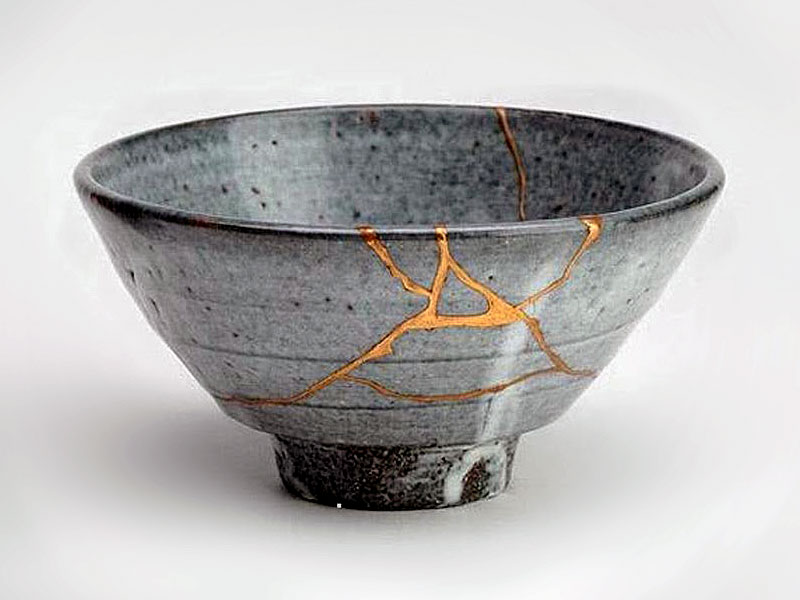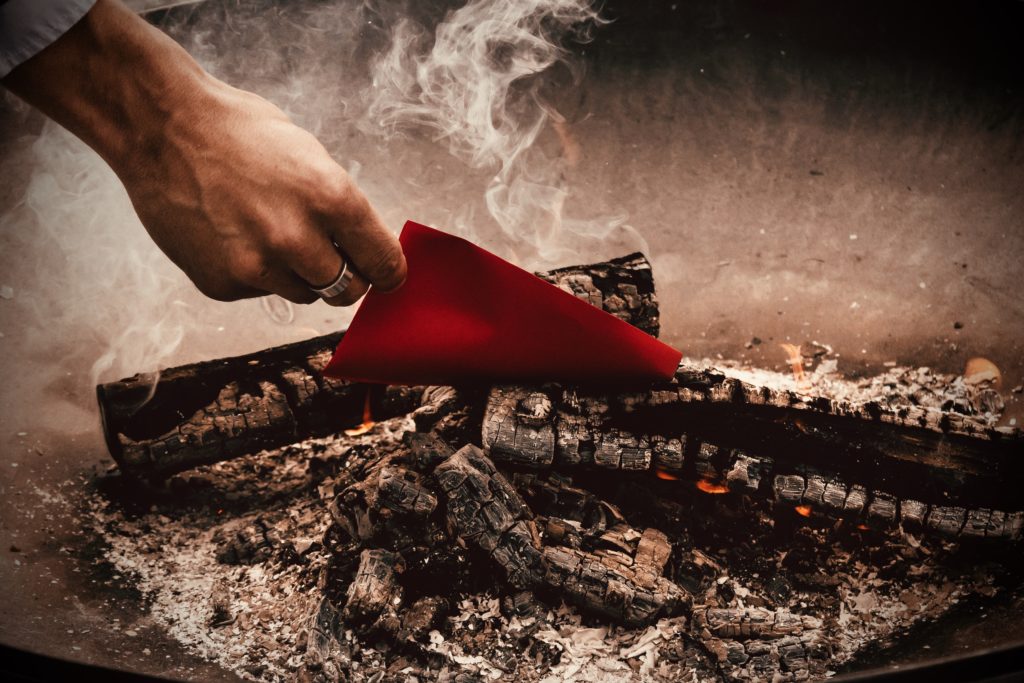About seven or eight years ago I was scrolling through my Facebook news feed when I came across a post with beautiful images of pottery. What struck me was that these pieces were ordinary—even plain—plates, glasses, and bowls, yet they all had gold or silver lines spider-webbing around them. I was struck by the contrast.
It turns out that I had stumbled upon the ancient Japanese art of kintsugi (or kintsukuroi), where they mix lacquer with liquid gold, silver or platinum, and then use that as glue to repair broken pottery.
The results are stunning. Everyday items suddenly take on a beauty and worth far beyond their original intention. And the very places where they broke—those weak and vulnerable places—suddenly become the strongest part of the piece as those precious metals infuse a life and strength into what was once shattered.
*
Last week I wrote that to be broken is to be blessed. And that is so very, very true.
But let me be clear: Brokenness is NOT the destination.
*
Imagine going to the doctor with a searing pain in your leg. It’s been hurting for a while, but you ignored it, tried to keep on doing life as you knew it. But it eventually got to be too much. In the office, the doctor examines your leg, takes x-rays. He tells you that it’s broken, that it needs surgery right away and then to be put in a cast or a boot—no walking for 3 months.
And instead of doing as he says, you marvel at how grotesque the bones look, how much it hurts. You are amazed with yourself for all you accomplished as you pushed through the pain. So you slide off the examine table, give him a nod and a “no thanks,” and then walk/limp your way out of the office. Three months? You don’t have time for that.
And with each painful step you take, you applaud yourself a little more. You soak up the sympathetic looks and attention. You begin to see and define yourself by how much it hurts, by how others see you, by how much you still accomplish—until the core of your identity becomes the very thing that keeps you broken.
Because without it, you don’t know who you are anymore.
*
We need to feel the sharp edges of our brokenness. We need to stretch out our fingers and brush the very edges of our limits so we know—know where our jagged ends are.
Know how we hurt people—and why.
Unfortunately, in the age where authenticity and vulnerability are traded like currency, this is where we stop. We sit there, surrounded by the shards of our lives, inviting people to look and marvel. And it takes on this twisted pride we wear like a badge of honor. We begin to measure ourselves and others by how many pieces surround us.
But that’s the thing about broken pottery—it’s useless.
It serves no purpose until Someone can see past the pieces to what it could be—until Someone can see its true beauty and infuse it with life and worth and strength.
Until Someone can redeem it.
*
One of the most amazing things to me about Jesus is not that He died, but that He rose again.
He was betrayed. Slandered. Falsely accused. Abandoned. Denied. Beaten and spit upon and mocked and tortured. He experienced one of the harshest and most horrendous ways to die that the ancient world invented.
And then He descended into the darkest and most evil place for three days.
Emotionally, spiritually, physically, mentally, He was broken—beyond what we can imagine.
Then something amazing happened: He came back to life.
He still had His scars, but there He was. Redeemed and full of life and strength and worth—the very things He continues to use to put us all back together even now.
*
We explore our brokenness not to navel gaze or wallow or worship or wonder, but to get a picture of the pieces that need a Master Craftsman to put them back together.
And the results are stunning. Everyday people suddenly take on a beauty and worth far beyond what this world can offer. And the very places where they broke—those weak and vulnerable places—suddenly become the strongest parts of them as the Master Craftsman infuses life and strength into what was once shattered.
To be broken is to be blessed.
But it is in the surrendering of the pieces, in offering all that we are to be molded by His hand—that we experience that blessing.
That we truly find redemption.
That we come back to life.
***




Thank you very much for this reminder!